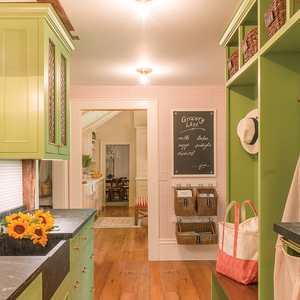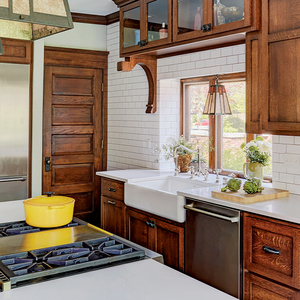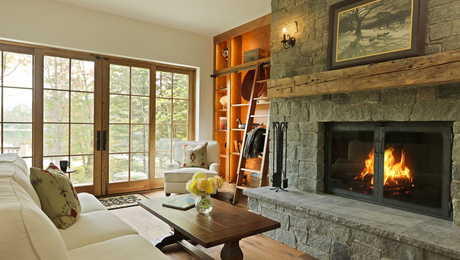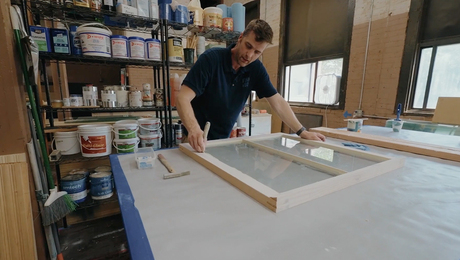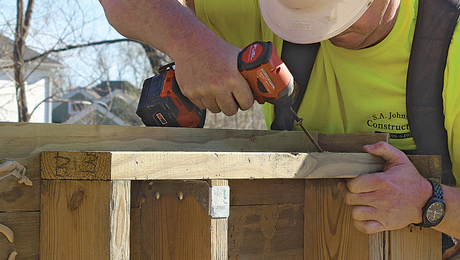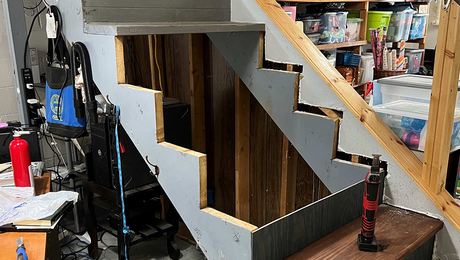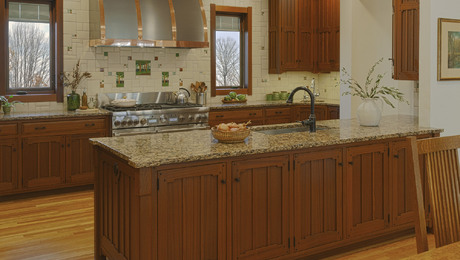Best Practices for Home-Building Project Communication
Project meetings, agendas, and record keeping are vital for managing expectations and ensuring a successful project.
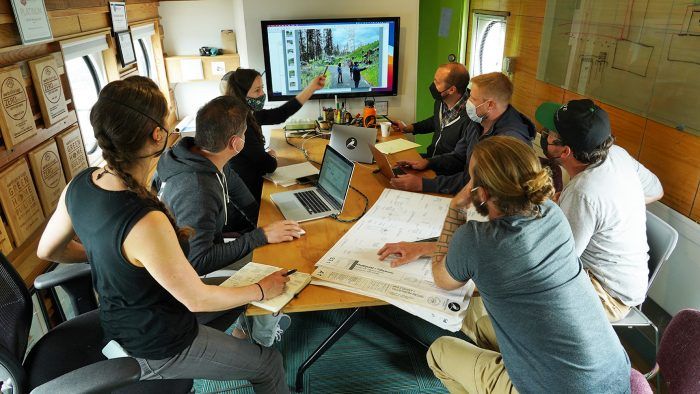
The success of a construction project is often looked at through the lens of the creative architects and designers, the hands of the skilled craftsperson, the understanding of the specialized tradespeople on the team, or the desires of the client. Every one of these people plays a crucial role, and they all have specific communication methods and requirements. It is vital that somebody on the team hold the responsibility for effectively managing communication in all its forms, with all the members of the team, and it’s the builder who can benefit the most from doing the managing. Areas that are especially at risk for bad outcomes from poor communication are changes to scope, comprehensive drawing details, and unresolved design decisions. The following processes can help builders avoid unnecessary problems and set the project up for ultimate success.
Set up regular project meetings
An easy way to manage communication and keep everyone informed and on task is a routine project meeting. The frequency of this event can be determined by the size of the project, but it should be scheduled with some regularity (weekly, monthly, etc.). It should include the design team, the build team, and relevant trade partners, and it should at least include an invitation for the homeowner or client. I’ve found that having the client involved in these meetings sets everyone up for the most success. This is certainly true when it comes to open design decisions and being very clear about the product to be delivered. It’s a perfect opportunity to prepare and share mock-ups of details, paint colors, tile samples, etc.
I generally prefer having these meetings on-site and in-person, but with the technology readily available, teleconferencing is also an effective way to facilitate. Either way, preparation for the meetings is similar. First, look over the minutes of the previous meeting to make sure there is nothing outstanding that needs to be addressed before the next one. Next, check in with the design team as well as the site supervisor, if there is one, prior to the scheduled meeting. This check-in provides a gentle reminder that they may have open tasks, or it gives them a chance to add anything new to the agenda. It also doesn’t hurt to take stock of any communication from the homeowner or other team members since the last meeting and to capture that in the agenda and follow-up minutes. A successful outcome of these meetings is clarity in the areas of schedule, budget, issue resolution, and ownership of any to-do or task items.
Document and review
A critical element of these project meetings is proper documentation. Every meeting should include a written agenda, and meeting minutes—the record of the conversation—should be distributed within 24 hours of the meeting. This is a great way to keep information fresh in everyone’s mind and serves as a reminder of any time-sensitive tasks that might have been identified at the meeting as well as who is responsible for completing those tasks. Ideally, the meeting agenda will always consist of a review of the schedule and budget and should identify potential problems and celebrate collective wins. If you are the builder of record, accurate meeting minutes also allow you to control the narrative and memorialize the discussions. Inevitably, when there are some setbacks or delays, there will always be a record of the events leading up to them. This is also a great opportunity to keep track of any missing design decisions and to stay on top of any long lead items.
I recommend that the builder or project manager run the meeting and keep both the agenda and the minutes. When documenting the conversation, I like to prepopulate much of what I plan on talking about ahead of time in the agenda. This helps me focus on the necessary tasks and search for answers. When the meeting is underway and topics are being discussed, it is then easy to record any additional information. It does not need to be complicated, just accurate. You can use anything from a paper notebook to a tablet or laptop—whatever works best for you. When sending out the meeting minutes, ask the members of your team if there is anything they disagree with or would like added to the record.
While it’s important to keep an accurate recording of the meeting, I think a casual but professional approach is appropriate when leading the meeting. In person, it’s nice to be relaxed and to celebrate the project that is underway, even if there are bumps in the road. It’s a great feeling when there is an interesting “show and tell” to share with the team, and when things are not so perfect, the transparency brings integrity to your process. Virtual meetings are little more “ordered” because it gets tricky when too many people are talking at the same time, but it can still be relaxed yet professional.
It is important for the one leading the meeting to be inclusive. Some folks might not be comfortable speaking up, so it is great practice to encourage those who are a little less comfortable to add to the narrative. If you as the builder are a little shy in these moments, it’s OK. We know public speaking is not everyone’s favorite thing, but try to be confident in the authority of your skill as a builder. Remember that this is your opportunity to control the narrative and make things easier for you down the road. Practice with your team, a friend, or your spouse ahead of time. Practice alone in the truck on the trip to the site. If I am leading virtually, I may do a dry run ahead of time to make sure I am clear on the topics and that the technology is working as we all expect it will.
Share information with clients
The builder should keep the client informed as often as necessary, and not just with project meetings or meeting minutes. An email bulletin, sent with some regularity, allows for open and transparent communication. The client will know to expect this information, and it will cut down on those after-hours and weekend calls and emails no builder likes to get. These bulletins should include the general status of the project, a rundown of the schedule, and any decisions that need to be made. It is advisable to include the design team on this email as well.
In the event of some unfavorable news, a phone call or in-person discussion is most appropriate. Bad news delivered in person is often easier to deal with than getting it in an email. However, don’t sugarcoat the message. In-person discussions should be documented with a follow-up email. Proper communication has some other benefits, including being able to set boundaries with clients. If a client is consistently informed, they are less likely reach out frivolously or to expect a response or action at unreasonable times. And the earlier in the process the expectation is managed, the sooner the boundary will be respected.
Work with trade partners
Communicating with trade partners is most often done on-site in informal meetings. With most smaller projects, this is an adequate and often necessary way to transmit information with the trade partners. Ideally, these conversations should always have an email follow-up for the record. In general, most of the information that trade partners need comes in the form of architectural drawings, cut sheets, and specification manuals. Creating a system that ensures trade partners have the most current information is critical to communication success. Assuming the folks you are working with have a basic level of technological comfort, setting up a digital file system and using QR codes is an excellent way to manage information for the trade partners. In my experience, maintaining paper documents can easily lead to miscommunication, like using an old plumbing layout or lighting schedule. Using certain software, like Autodesk Build, Buildertrend, or Procore—or even something as simple and accessible as Dropbox or Google Drive—is a great way to limit miscommunication with trade partners. You can easily set up links to these shared folders using QR codes that will lead your partners to the most current information available.
Project scopes vary in size and difficulty, but the value of proper communication cannot be understated in any case. It can only benefit the builder to manage communication, along with documentation, in such a way that allows for transparency for the entire team, and maybe most importantly for the client to feel informed. And an informed client almost always ensures a successful project.
Photo by Asa Christiana
RELATED STORIES
- Understanding the Business Side of Construction
- Mel Baiser, Co-Founder of Helm Construction Solutions
- Tools for Managing Home-Building Financials
Fine Homebuilding Recommended Products
Fine Homebuilding receives a commission for items purchased through links on this site, including Amazon Associates and other affiliate advertising programs.

Musings of an Energy Nerd: Toward an Energy-Efficient Home

Get Your House Right: Architectural Elements to Use & Avoid

A Field Guide to American Houses








